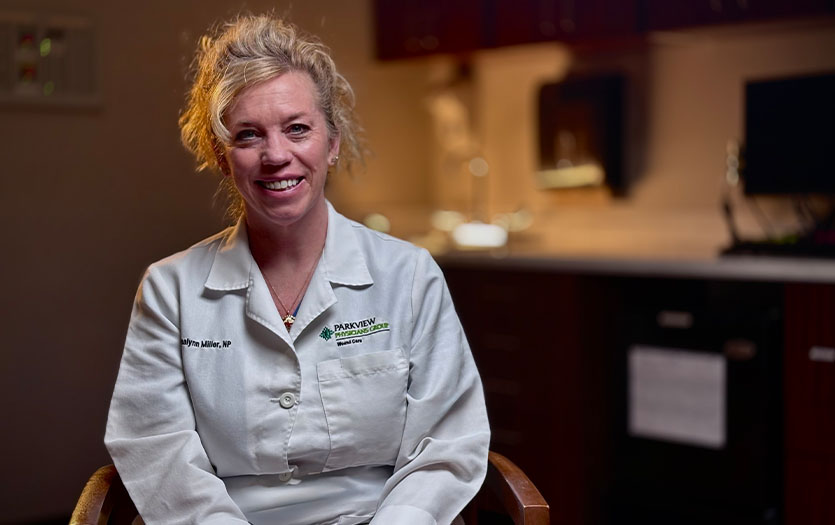
Todd Sider, MD, Parkview Physicians Group – General Surgery, shares some helpful information on hernia diagnosis and treatment for National Hernia Awareness Month.
Defining a hernia.
It’s a defect or opening in the abdominal wall. Hernias can occur where there are normal or natural openings in the structures that make up the boundaries of the abdomen, through defects in previous incisions of the abdomen or in areas where there should be no defect at all.
The various types of hernias.
Hernias have different names based on the location, origin and even the contents contained in the hernia. Most people are familiar with the most common hernias – groin hernias and ventral abdominal wall hernias. Groin hernias include inguinal and femoral hernias. Inguinal hernias are much more common in men than in women but are the most common groin hernias in both sexes. Femoral hernias are more common in women than men, but still less common in both sexes than inguinal hernias.
Ventral hernias include defects of the abdominal wall at the umbilicus (the belly button) or any other area of the anterior abdominal wall. Umbilical hernias may be visible from birth or develop any time there after. Some ventral hernias are very difficult to diagnose, as they don’t present with the typical bulge that people associate with a hernia.
Symptoms and diagnosis.
Hernias can be either symptomatic or not. Symptoms that might prompt a surgeon to suggest surgery would include pain, enlarging size, change in the skin overlying the hernia, or risk of impending Incarceration or strangulation. In children, inguinal hernias are usually repaired when they are diagnosed in contrast to umbilical hernias, which the physician will typically monitor until about the age of 5 to give the defect a chance to close on its own. The easiest way to diagnose a hernia is with a good history and physical examination by a trained general surgeon. Not all hernias are found this way though and other diagnostic tests may be necessary.
Treatment.
If a hernia becomes incarcerated (meaning the contents in the hernia cannot be returned to the abdominal cavity) or strangulated (where the incarcerated contents lose their blood supply), the hernia must be repaired. Hernias that are high risk for these complications are generally repaired as an elective operation as the surgical and post-operative complication rates are much lower in this situation. The decision on, if and what type of repair that is done, is made by the surgeon and patient together.
If you think you might have a hernia, consult your physician.



